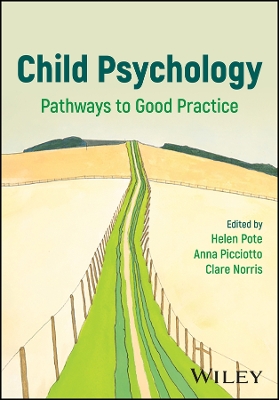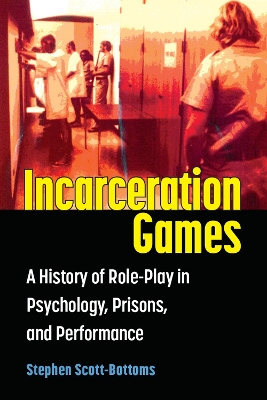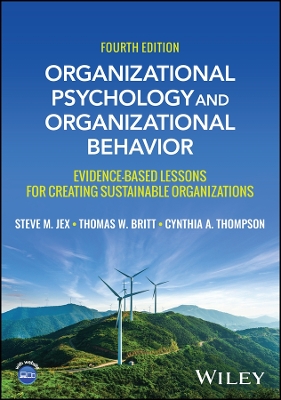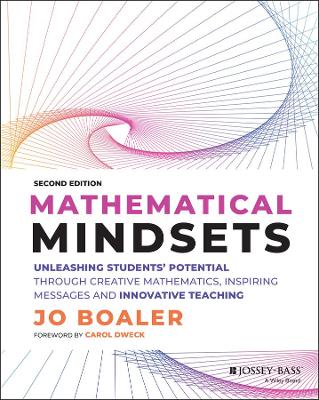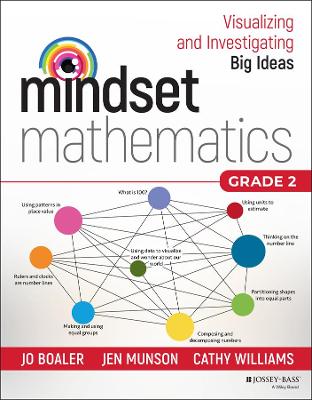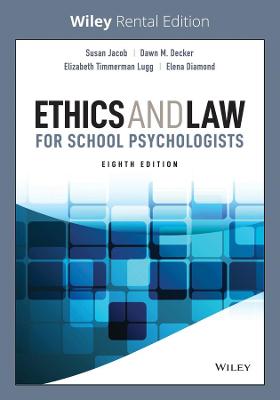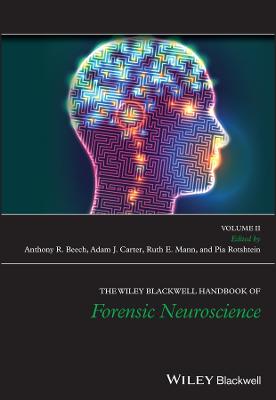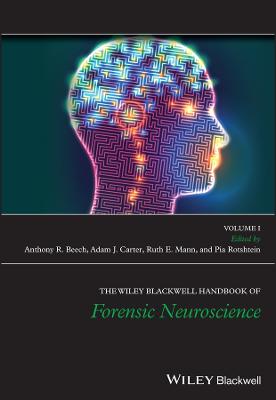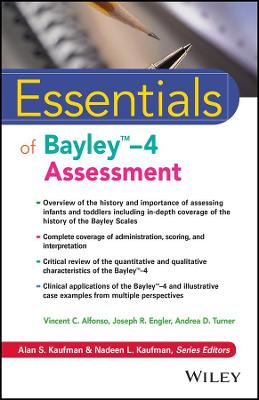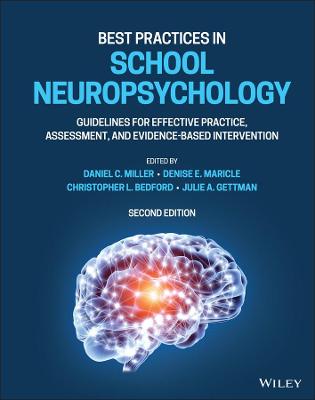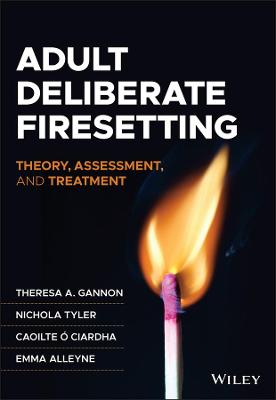Teaching Psychology
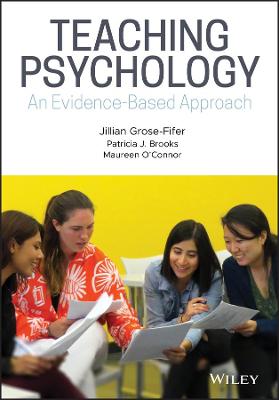 -15%
portes grátis
-15%
portes grátis
Teaching Psychology
An Evidence-Based Approach
O'Connor, Maureen; Grose-Fifer, Jillian; Brooks, Patricia J.
John Wiley & Sons Inc
02/2019
288
Mole
Inglês
9781118958056
15 a 20 dias
540
Foreword xiii
About the Companion Website xvii
Introduction 1
1 Why a Student-Centered Approach to Teaching? 5
1.1 A Paradigm Shift? 5
1.2 Setting the Stage for Transformative Learning 7
1.3 Knowing Your Students 7
1.3.1 Connecting Identity with Motivation for Learning 7
1.3.2 Teaching Digital Natives 8
1.3.3 Our Diverse Student Body 9
1.4 Supporting First-Generation College Students 12
1.5 Culturally Responsive Instruction 13
1.5.1 Fostering an Environment of Inclusivity 14
1.5.2 Fostering Positive Attitudes toward Learning 18
1.5.3 Enhancing Meaning for Students through Active Learning 19
1.6 Starting Off with a Student-Centered Philosophy 21
1.7 Summary 22
2 Designing a Course Based on Learning Objectives 23
2.1 Backward Course Design 23
2.2 Step 1: Developing Learning Goals and Objectives 24
2.3 Step 2: Developing Assessment Strategies 26
2.4 Step 3: Creating Meaningful Learning Experiences in the Classroom 31
2.4.1 Pre-Class Preparation and Using Readings 31
2.4.2 Selecting a Textbook 33
2.5 Universal Design 35
2.5.1 Should Instruction Be Tailored to Students' Preferred Learning Styles? 37
2.6 Creating a Syllabus 38
2.7 Interim and Post-Course Reflection and Student Evaluation: How Is it Going? 42
2.8 Summary 44
2.A Syllabus Checklist 44
3 Effective Multimedia Instruction 45
3.1 Use (and Abuse) of PowerPoint (PPT) in Higher Education 45
3.1.1 Best Practices for Slideware and Other Multimedia Presentations in the Classroom 46
3.1.2 More Innovative Use of Slideware 48
3.2 Student Response Systems 49
3.2.1 Student Collaboration and SRSs 51
3.2.2 Scientific Literacy and SRSs 52
3.3 Use of Videos and Video Clips in Classes 52
3.3.1 Guidance on Using Potentially Distressing Video Materials 56
3.4 Information Literacy and the Effective Use of the Internet 57
3.4.1 Benefits of Wikipedia Editing Assignments 60
3.5 Other Multimedia Projects 62
3.5.1 Student-Created Videos and Podcasts 63
3.5.2 Digital Stories 65
3.6 Summary 67
4 Advancing Critical Thinking through Active Learning 69
4.1 What is Critical Thinking? 69
4.2 Critical Thinking Instruction 71
4.2.1 Activity-Based Instruction 72
4.3 Oral Communication: Talking to Learn (and Learning to Talk) 73
4.3.1 Fostering Inclusive Discussion 73
4.3.2 Debates 76
4.3.3 Role-Playing 77
4.4 In-Class Demonstrations and Simulations 80
4.5 Distinguishing Science from Pseudoscience in Psychology Classes 82
4.5.1 Developing Digital Literacy Skills 84
4.6 Developing Qualitative and Quantitative Reasoning Skills 85
4.6.1 Qualitative Reasoning 85
4.6.2 Quantitative Reasoning 87
4.6.3 Problem-Based Learning 89
4.7 Service Learning and Community-Based Research 89
4.8 Challenges of Assessing Improvements in Critical Thinking 92
4.9 Summary 93
5 Group Work 95
5.1 Benefits of Group Work 95
5.1.1 Theoretical Underpinnings of Why Small-Group Work Works 97
5.2 Effective Strategies for Participation 98
5.2.1 Setting the Scene for Group Work 98
5.2.2 Gearing Up for Formal Group Work 100
5.2.3 Structuring a Cooperative Learning Task 101
5.2.4 Group Composition 102
5.2.5 Helping Students Develop Collaborative, Leadership, and Planning Skills 103
5.3 How to Minimize Undesirable Group Behaviors 105
5.3.1 Social Loafing and Free-Riding 105
5.3.2 Supporting "Involuntary" Free-Riders 106
5.3.3 Lone Wolves 107
5.4 Cooperative Learning Structures 107
5.4.1 Learning Together and Alone 107
5.4.2 Inter-Teaching 107
5.4.3 Problem-Based Learning 108
5.4.4 Team-Based Learning 110
5.4.5 Jigsaw Classroom Design 112
5.5 Cooperative Learning Games 113
5.6 Summary 114
6 Learning to Write and Writing to Learn 115
6.1 The Value of Writing in Learning 115
6.2 Strategies for Teaching Reading and Writing 116
6.2.1 Strategies for Designing Introductory Psychology Writing Assignments 117
6.2.2 Next Steps in Designing Psychology Writing Assignments 118
6.3 Helping Students to Improve Writing Drafts 121
6.3.1 Encouraging Students to Think Metacognitively about Writing 121
6.3.2 Using Peer Review to Give Feedback 122
6.3.3 Giving Effective Feedback and Helping Students Respond to Feedback 123
6.3.4 Using Rubrics to Provide Feedback 126
6.4 Plagiarism 127
6.5 Lowering the Stakes in Writing Assignments 128
6.5.1 Small Paper Writing 129
6.5.2 Minute Papers 130
6.5.3 Microthemes 131
6.5.4 Reflection Papers 132
6.5.5 Creative Writing Assignments in Psychology 132
6.5.6 Journaling 132
6.6 Summary 134
7 Enhancing Learning through Testing, Metacognitive Development, and Psychosocial Interventions 135
7.1 Why Use Tests in Student-Centered Teaching? 135
7.1.1 Benefits of Retrieval Practice 136
7.1.2 Importance of Distributing and Interleaving Practice 137
7.2 Using Quizzes in Your Classes 138
7.2.1 Quiz and Test Design 139
7.2.2 Helping Students to Use Quiz and Test Feedback to Enhance Learning 142
7.2.3 Cumulative Tests 143
7.3 Students' Metacognitive Biases 143
7.3.1 Instructors' Metacognitive Biases 145
7.4 Building Study Habits 145
7.5 Mindsets around Testing and Learning 149
7.5.1 Overcoming Student Anxiety and Increasing Motivation for Learning 150
7.5.2 Dealing with Failure and Building Resilience 152
7.6 Summary 154
8 Gearing Up to Teach Online 155
8.1 The Continuum of Online Instruction 155
8.2 How Course Management Systems can Make Face-to-Face Classes More Student-Centered 156
8.3 Using Online Tools to Facilitate Writing, Collaboration, and Critical Thinking 158
8.3.1 What Kinds of Blog Assignment Work? 161
8.3.2 How to Set Up a Successful Blog Assignment 163
8.3.3 Using Wikis to Improve Writing, Critical Thinking, and Information Literacy 164
8.4 Teaching in a Flipped Classroom 166
8.4.1 Activities for the Flipped Classroom 169
8.5 Transitioning to Teaching Fully Online 170
8.6 Summary 173
9 Becoming an Effective and Fulfilled Teacher 175
9.1 Ethical Teaching Using an Evidence-Based Approach 175
9.2 Ethical Classroom Management 178
9.3 Closing the Loop: Evaluating the Effectiveness of Your Instruction 179
9.4 The Scholarship of Teaching and Learning 181
9.5 Mentoring Student Research 185
9.6 Self-Assessment 186
9.7 Developing a Teaching Portfolio 187
9.8 Writing a Teaching Philosophy Statement 187
9.9 Summary 191
References 193
Index 259
Foreword xiii
About the Companion Website xvii
Introduction 1
1 Why a Student-Centered Approach to Teaching? 5
1.1 A Paradigm Shift? 5
1.2 Setting the Stage for Transformative Learning 7
1.3 Knowing Your Students 7
1.3.1 Connecting Identity with Motivation for Learning 7
1.3.2 Teaching Digital Natives 8
1.3.3 Our Diverse Student Body 9
1.4 Supporting First-Generation College Students 12
1.5 Culturally Responsive Instruction 13
1.5.1 Fostering an Environment of Inclusivity 14
1.5.2 Fostering Positive Attitudes toward Learning 18
1.5.3 Enhancing Meaning for Students through Active Learning 19
1.6 Starting Off with a Student-Centered Philosophy 21
1.7 Summary 22
2 Designing a Course Based on Learning Objectives 23
2.1 Backward Course Design 23
2.2 Step 1: Developing Learning Goals and Objectives 24
2.3 Step 2: Developing Assessment Strategies 26
2.4 Step 3: Creating Meaningful Learning Experiences in the Classroom 31
2.4.1 Pre-Class Preparation and Using Readings 31
2.4.2 Selecting a Textbook 33
2.5 Universal Design 35
2.5.1 Should Instruction Be Tailored to Students' Preferred Learning Styles? 37
2.6 Creating a Syllabus 38
2.7 Interim and Post-Course Reflection and Student Evaluation: How Is it Going? 42
2.8 Summary 44
2.A Syllabus Checklist 44
3 Effective Multimedia Instruction 45
3.1 Use (and Abuse) of PowerPoint (PPT) in Higher Education 45
3.1.1 Best Practices for Slideware and Other Multimedia Presentations in the Classroom 46
3.1.2 More Innovative Use of Slideware 48
3.2 Student Response Systems 49
3.2.1 Student Collaboration and SRSs 51
3.2.2 Scientific Literacy and SRSs 52
3.3 Use of Videos and Video Clips in Classes 52
3.3.1 Guidance on Using Potentially Distressing Video Materials 56
3.4 Information Literacy and the Effective Use of the Internet 57
3.4.1 Benefits of Wikipedia Editing Assignments 60
3.5 Other Multimedia Projects 62
3.5.1 Student-Created Videos and Podcasts 63
3.5.2 Digital Stories 65
3.6 Summary 67
4 Advancing Critical Thinking through Active Learning 69
4.1 What is Critical Thinking? 69
4.2 Critical Thinking Instruction 71
4.2.1 Activity-Based Instruction 72
4.3 Oral Communication: Talking to Learn (and Learning to Talk) 73
4.3.1 Fostering Inclusive Discussion 73
4.3.2 Debates 76
4.3.3 Role-Playing 77
4.4 In-Class Demonstrations and Simulations 80
4.5 Distinguishing Science from Pseudoscience in Psychology Classes 82
4.5.1 Developing Digital Literacy Skills 84
4.6 Developing Qualitative and Quantitative Reasoning Skills 85
4.6.1 Qualitative Reasoning 85
4.6.2 Quantitative Reasoning 87
4.6.3 Problem-Based Learning 89
4.7 Service Learning and Community-Based Research 89
4.8 Challenges of Assessing Improvements in Critical Thinking 92
4.9 Summary 93
5 Group Work 95
5.1 Benefits of Group Work 95
5.1.1 Theoretical Underpinnings of Why Small-Group Work Works 97
5.2 Effective Strategies for Participation 98
5.2.1 Setting the Scene for Group Work 98
5.2.2 Gearing Up for Formal Group Work 100
5.2.3 Structuring a Cooperative Learning Task 101
5.2.4 Group Composition 102
5.2.5 Helping Students Develop Collaborative, Leadership, and Planning Skills 103
5.3 How to Minimize Undesirable Group Behaviors 105
5.3.1 Social Loafing and Free-Riding 105
5.3.2 Supporting "Involuntary" Free-Riders 106
5.3.3 Lone Wolves 107
5.4 Cooperative Learning Structures 107
5.4.1 Learning Together and Alone 107
5.4.2 Inter-Teaching 107
5.4.3 Problem-Based Learning 108
5.4.4 Team-Based Learning 110
5.4.5 Jigsaw Classroom Design 112
5.5 Cooperative Learning Games 113
5.6 Summary 114
6 Learning to Write and Writing to Learn 115
6.1 The Value of Writing in Learning 115
6.2 Strategies for Teaching Reading and Writing 116
6.2.1 Strategies for Designing Introductory Psychology Writing Assignments 117
6.2.2 Next Steps in Designing Psychology Writing Assignments 118
6.3 Helping Students to Improve Writing Drafts 121
6.3.1 Encouraging Students to Think Metacognitively about Writing 121
6.3.2 Using Peer Review to Give Feedback 122
6.3.3 Giving Effective Feedback and Helping Students Respond to Feedback 123
6.3.4 Using Rubrics to Provide Feedback 126
6.4 Plagiarism 127
6.5 Lowering the Stakes in Writing Assignments 128
6.5.1 Small Paper Writing 129
6.5.2 Minute Papers 130
6.5.3 Microthemes 131
6.5.4 Reflection Papers 132
6.5.5 Creative Writing Assignments in Psychology 132
6.5.6 Journaling 132
6.6 Summary 134
7 Enhancing Learning through Testing, Metacognitive Development, and Psychosocial Interventions 135
7.1 Why Use Tests in Student-Centered Teaching? 135
7.1.1 Benefits of Retrieval Practice 136
7.1.2 Importance of Distributing and Interleaving Practice 137
7.2 Using Quizzes in Your Classes 138
7.2.1 Quiz and Test Design 139
7.2.2 Helping Students to Use Quiz and Test Feedback to Enhance Learning 142
7.2.3 Cumulative Tests 143
7.3 Students' Metacognitive Biases 143
7.3.1 Instructors' Metacognitive Biases 145
7.4 Building Study Habits 145
7.5 Mindsets around Testing and Learning 149
7.5.1 Overcoming Student Anxiety and Increasing Motivation for Learning 150
7.5.2 Dealing with Failure and Building Resilience 152
7.6 Summary 154
8 Gearing Up to Teach Online 155
8.1 The Continuum of Online Instruction 155
8.2 How Course Management Systems can Make Face-to-Face Classes More Student-Centered 156
8.3 Using Online Tools to Facilitate Writing, Collaboration, and Critical Thinking 158
8.3.1 What Kinds of Blog Assignment Work? 161
8.3.2 How to Set Up a Successful Blog Assignment 163
8.3.3 Using Wikis to Improve Writing, Critical Thinking, and Information Literacy 164
8.4 Teaching in a Flipped Classroom 166
8.4.1 Activities for the Flipped Classroom 169
8.5 Transitioning to Teaching Fully Online 170
8.6 Summary 173
9 Becoming an Effective and Fulfilled Teacher 175
9.1 Ethical Teaching Using an Evidence-Based Approach 175
9.2 Ethical Classroom Management 178
9.3 Closing the Loop: Evaluating the Effectiveness of Your Instruction 179
9.4 The Scholarship of Teaching and Learning 181
9.5 Mentoring Student Research 185
9.6 Self-Assessment 186
9.7 Developing a Teaching Portfolio 187
9.8 Writing a Teaching Philosophy Statement 187
9.9 Summary 191
References 193
Index 259


